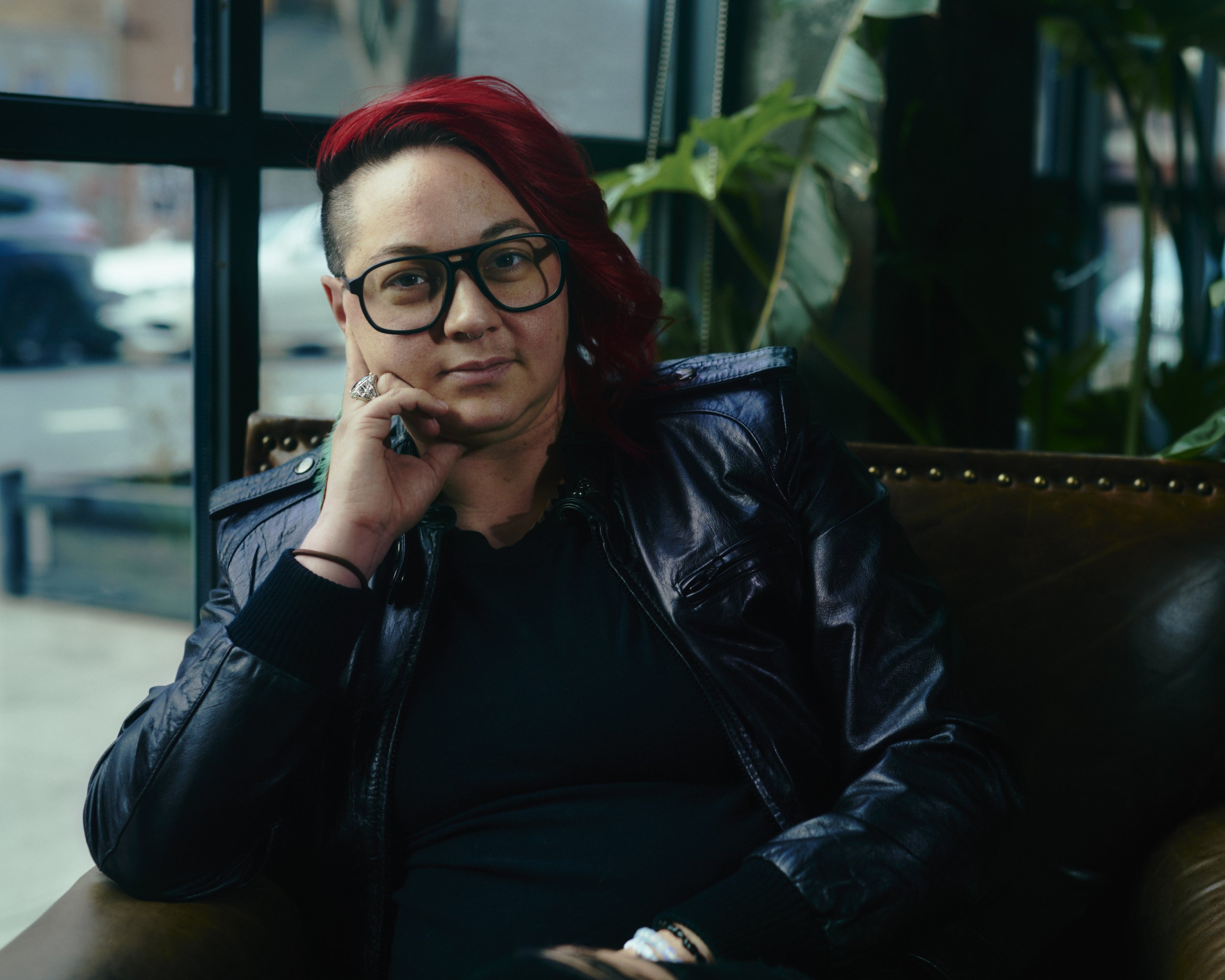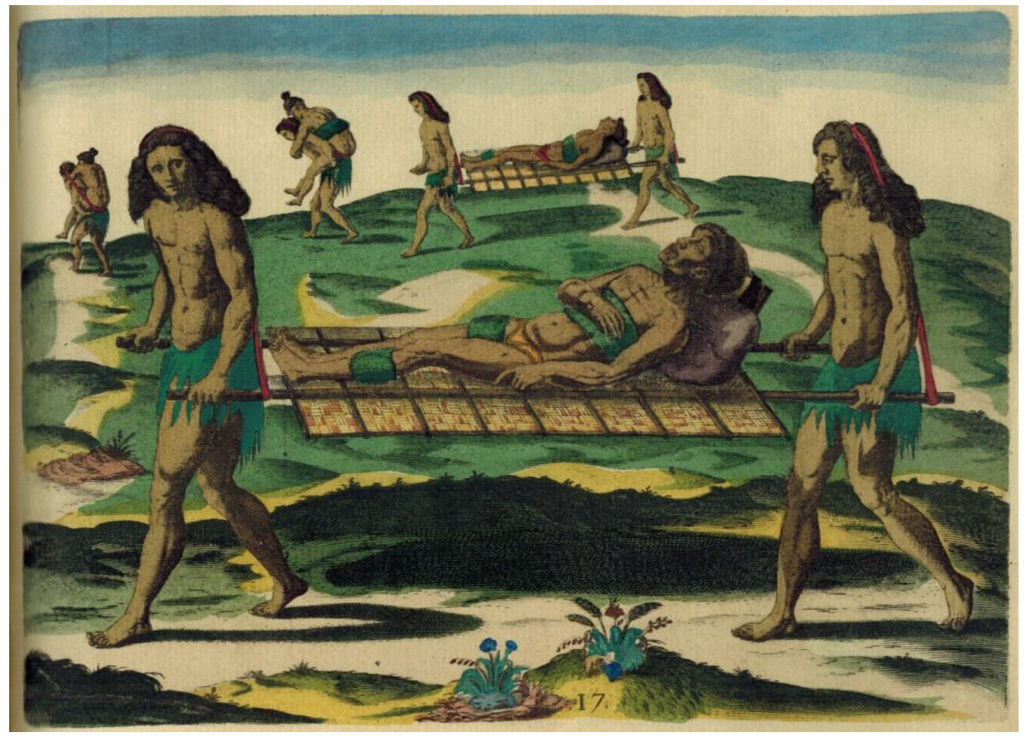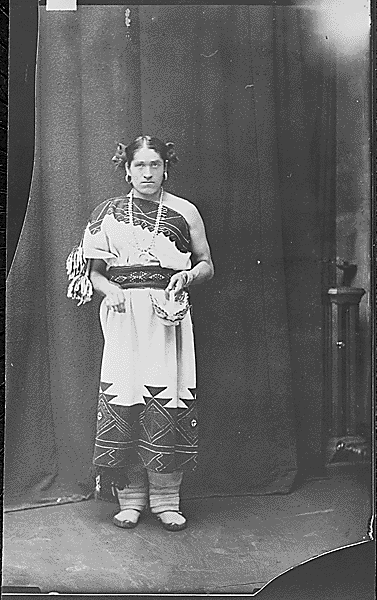45. There's No Crying in Baseball, But There Are Lesbians! Queer History of the AAGPBL
/An episode Leigh has been dreaming of since the start of the pod is finally here! In this ep, Leigh is joined by guest host Frankie de la Cretaz, sports journalist, queer history buff, and certified Gaylor Swiftie, to discuss the queer history of women’s baseball & softball, in particular the story of the All-American Girls Professional Baseball League, aka the inspiration behind A League of Their Own! We discuss all the extreme “no-homo”ing that was happening in the League’s rules and regulations, and all the YES HOMO-ing that happened in spite of it, making the sport into an important site of queer community.
Frankie de la Cretaz (they/them) is a writer whose work focuses on the intersection of sports and gender. They are the co-author of HAIL MARY: The Rise and Fall of the National Women’s Football League and their work has been featured in the New York Times, Sports Illustrated, The Atlantic, and more.
Locate Frankie upon the internet:
@thefrankiedlc on Instagram
@thefrankiedlc on Twitter
The Beginnings: Women & Softball
Softball started as a way to play baseball indoors during cold winters, and women were there from the very beginning. Check out this photo of the first-known organized women’s baseball team, the Vassar College Resolutes, in 1876. Those outfits!
The Leagues: The AAGPBL
Prompted by the shortages of men in professional baseball due to World War II, chewing-gum magnate and owner of the Chicago Cubs, Phillip K. Wrigley, started recruiting women for his new All American Girls’ Softball League (which would change its name to the All American Girls’ Professional Baseball League) in 1943.
Phillip K. Wrigley
The original logo for the AAGPBL, when it was still the All-American Girls Softball league
1945 flier for aagpbl GAME
The first players signed to the AAGSL in 1943: Clara Shillace, Ann Harnett, Edie Perlick, and Shirley Jameson
The league’s regulations about makeup, grooming, and dress were extremely strict and feminized, to dispel associations of the league with lesbians.
Racine Bells vs. South Bend Blue Sox, September 14, 1947
AAGPBL doing calistenics in Opa-Locka, Florida, 1948
Dorothy Harrell, shortstop for the Chicago Colleens, in an amazing catch from a 1948 game
The Leagues: NGBL
Inspired by the success of the recruiting efforts of the AAGPBL, Forest Park roofing company owner Emery Parichy, who also owned the Chicago Cardinals football team, started the National Girls Baseball League, a professional underhand fast-pitch softball league based out of Chicago, that ended up being the primary rival league for the AAGPBL.
Where the All-American focused on femininity and image, the NGBL focused more on the sport. They allowed the players to compete in shorts, didn’t have makeup and charm school requirements, and was integrated.
Emery Parichy, the founder and owner of the national girls’ baseball league (NGBL)
The NGBL and AAGPBL were in constant rivalry for players and poached from each other enough that an official peace agreement had to be drawn up
Parichy’s Bloomer Girls in 1946
Pink Poirok and Ricki Caito
Lois Roberts, the famously barefoot outfielder for the Ngbl!
Nancy Ito, NGBL’s first Japanese american player in the ngbl, played shortstop for the bloomer girls in 1953.
Betty Chapman, the first Black woman to play professional softball. She was an outfielder for the admiral music maids, 1951
Gwen Wong, the NGBL’s first chinese-american player, a left-handed rookie pitcher from san francisco for the bloomer girls.
Their Turn at Bat: The Story of the National Girls Baseball League is a documentary project in the making by filmmaker Adam Chu, the premiere expert on the NGBL! Please visit his website to support the efforts to make the film and check out all the amazing memorabilia for the NGBL he has, and thank you to Adam for letting us use these photos and introducing our listeners to the NGBL!
Queer Ball Players of Note
Take a look at some of the ball players we mentioned in the episode who were/are queer!
Maybelle Blair
Born January 16, 1927 in Inglewood, CA, and was a pitcher for the Peoria Redwings in the AAGPBL. She then went on to play for the Cardinals in Emery Parichy’s NGBL, and then the Jax Softball Club of New Orleans, LA.
She came out at the age of 95 during the press tour for the new A League of Their Own series, which she consulted on, and is now living her best gay life!
JoJo D’Angelo
November 23, 1924 – August 18, 2013. Born in Chicago, IL, and played outfield for 2 seasons with the South Bend Blue Sox in the AAGPBL. She set an all-time record for fewest strikeouts in a season, until she was fired from the league for a “butchy” haircut. She went on to become a PE teacher and a hero of the Chicago public school system for 34 years.
Her obituary mentioned that she identified as a lesbian since she was a teenager.
JoJo D’Angelo, outfield for SOuth Bend Blue Sox
Mildred “Millie” Deegan
December 11, 1919 - July 21, 2002. Born in Brooklyn, NY, and ended up playing 10 seasons with the AAGPBL, as a Rockford Peach, Kenosha Comet, and a Fort Wayne Daisy, and was known as The Babe Ruth of Women’s Softball.
Her obituary mentioned her partner, Margaret Nusse, as her companion and survivor.
Babe Ruth feeling Millie Deegan’s bicep during an exhibition game, 1938. (Photo: The Diamond Angle, via Archive Today)
Millie and Margaret’s funeral plaque
Terry Donahue & Pat Henschel
Terry Donahue, August 22, 1945 - March 14, 2019, born in Saskatchewan, Canada. Played as catcher for the Peoria Redwings in the AAGPBL from 1946-1949, before playing for the Admiral Music Maids in the National Girls Baseball League in 1950.
She met her partner, Pat Henschel, during an off season from the AAGPBL at a hockey game, and they fell in love quickly. They kept their relationship secret from family until they were in their eighties, and a documentary A Secret Love was made about their relationship. They got married in 2015 at their assisted living facility.
Terry passed in 2019, and Pat Henschel is still living in the assisted living facility. Their legacy was cemented with a pair of bobbleheads, showcasing their sports prowess!
Dot Wilkinson
Born October 9, 1921 in Phoenix, AZ — we noted in the episode that she was still alive at the age of 101, but unfortunately she passed a few days after we recorded our episode.
One of the greatest women’s softball players of all time — Wilkinson was offered a contract with the AAGPBL and turned it down, put off by the homophobic rules and she was attached to her softball team, The Phoenix Ramblers, which she had been playing for since she was a bat girl at the age of 11.
She and her partner, Estelle “Ricki” Caito, met as rival softball players who then became friends and then began dating, in a REAL LIFE ENEMIES-TO-LOVERS trope!!
Dot WIlkinson, perhaps the best women’s softball player of all time. Played for the Phoenix Ramblers for 32 years.
Ricki Caito, second baseman for the Bloomer Girls of the NGBL. She also played softball for the California Orange Lionettes, opposite Dot WIlkinson’s Ramblers
Lorraine Hurdle
February 16, 1922 - January 2014. Hurdle never played for a professional league, but she played softball and baseball when she was part of the Women’s Army Corp, serving in WWII. She joined the military in 1944, moved to California in the 1960s, and had a successful tax advising business with a large group of Black and queer friends. She apparently frequently had crushes on femmes, including a school bus driver named Miss Ruby who called Hurdle “Daddy”. She was a classic old-school butch who liked cars, sports, and gambling.
Hurdle playing pool in her women’s army corps uniform. Lorraine Hurdle papers. Collection Number: 2018-12. GLBT Historical Society
Lorraine Hurdle and Baseball Team. Lorraine Hurdle papers. Collection Number: 2018-12. GLBT Historical Society
If you want to learn more, check out our full list of sources and further reading below!
Online Articles & Resources:
"A Secret Love's Pat Henschel Shares What Made Her 72-Year Relationship Last"
"Lesbian Couple From Netflix Doc A Secret Love Made Into Bobbleheads"
"‘A Secret Love’ spotlights remarkable 70-year lesbian relationship"
"A Secret Love Update: What Happened to Pat Henschel After Terry Donahue Passed Away"
"Revealing the long but hidden history of queer women in sport"
"‘A League of Their Own’ – Most were lesbian, former player says"
“How 101-year-old softball legend Dot Wilkinson found her two great loves in the same place”
How World War II Spurred a Decade of Women’s Pro Baseball, History.com
National Girls’ Baseball League articles
https://news.wttw.com/2016/04/20/ask-geoffrey-league-chicago-s-own#womenWomen's History Month: A Great Time to Reflect on Softball's Rich History
A Lavender League of Their Own? Voice and Visibility of Lesbian Ballplayers
She Inspired ‘A League of Their Own.’ At 95, She’s Far From Done.
Books and Print Articles:
Pierman, Carol J. “Baseball, Conduct, and True Womanhood”. Women’s Studies Quarterly, Vol. 33, No. 1/2, Women and Sports (Spring-Summer 2005), pp. 68-85. https://www.jstor.org/stable/40005502
Cahn, Susan K. “From the ‘Muscle Moll’ to the ‘Butch’ Ballplayer: Mannishness, Lesbianism, and Homophobia in U.S. Women’s Sport.” Feminist Studies, vol. 19, no. 2, 1993, pp. 343–68. JSTOR, https://doi.org/10.2307/3178373.
Adams, Natalie, et al. “Tomboys, Dykes, and Girly Girls: Interrogating the Subjectivities of Adolescent Female Athletes.” Women’s Studies Quarterly, vol. 33, no. 1/2, 2005, pp. 17–34. JSTOR, http://www.jstor.org/stable/40005499.























































